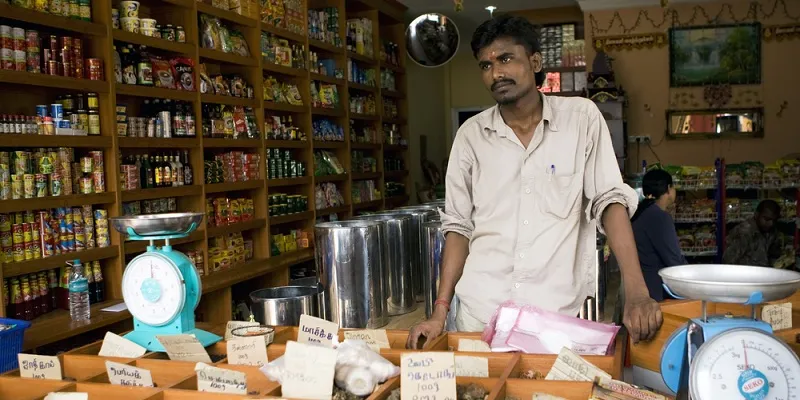The real Indian is a kirana and community loyalist, so why do consumer businesses mistake us for a homogeneous bunch?
What does the term Indian mean? Who is this consumer e-commerce businesses are after? Why have large e-commerce companies been successful in selling mobile phones, electronics, books, and apparel, while they just talk about dabbling with food and grocery? These are some questions everybody wants answers to, especially when the opportunity in food retailing is a whopping $300 billion - as projected by Ernst and Young – in the overall retail market of $600 billion.
India’s organised retailing is only 10 per cent of the total market opportunity, and within this large pie, organised food retailing is only $9 billion in size. Large brick-and-mortar players like the Future Group and Reliance Retail make up for two-thirds of the revenues in this market. With all their investment muscle, they are still grappling to understand the food consumption basket in India even after localising their store assortments by region. Let us decode this mystery.
Let me begin my argument by making a point that no e-commerce company can possibly make in-roads in to the Indian household’s food basket until they understand the history and the sociology behind India’s agricultural and community roots.

The root is land, community and food
Much of the world, as eminent historians - like Francis Fukuyama - put it, has emerged from tribes to Statehood with technological revolutions. Mass production in agriculture and the creation of markets was one of the major events in human history. In India, statehood is loosely entwined with the caste system and varied by region and by religion. Agriculture is the primary mode of occupation and continues to be the livelihood of at least 65 per cent of the population. Therefore, consumption of food is also tied to the mythology of the community that is also part of the narrative of a larger religion and State. The late food scientist K T Achaya summed up in his books that food in India was so diverse that each community carried its own cultural identity because of it.
When the British took over the dominion called India, many of their Statesmen and Governor-Generals were confused about what constituted the nature of being Indian. They simplified it by teaching Indians to speak English just so that it made it easier – for them - to run the country than being confused over the myriad tribes and communities that made up of this place.
Over time, it was the influence of the British that brought the concept of nationalism to our freedom fighters, who in turn, united the many kingdoms and the people of India into a Nation. The nation’s constitutional principles were to uphold diversity. Perhaps that’s the reason the Union of Indian States survives as a nation. Unfortunately, proponents of technology do not want to include cultural diversity while building a road map to their business; they aim to uproot culture and treat it as a single set of people.
Just because Indians like film music, dance, political gossip, cricket, and movies, it does not mean their community or culture is far away from them. Food and their community moorings are a major part of their lives. There is a hidden narrative of common history with several tribes and communities, which continues to be ignored every day. An Indian maintains a double life.
The Indian has a strong affinity towards his community when found with individuals of the same group. The same bunch of people can be Indians while watching a game of sport. India is like a god or goddess with many hands, it cannot be rationalised into one single unit. No wonder proprietary licensed software vendors have always found it difficult to sell to small businesses in India. Doing business in India is a much more complex than an Anglo-Saxon Europe. The funny part is that several western educated Indians struggle to understand India in its fullness.
The indomitable kirana
The kirana system in India was created around local markets and agricultural fairs to serve surrounding towns. Indian farmers are not linked to a global economy, but are linked to local preferences and tastes. Yes, spurt in onion prices bring governments down. But majority of farm produce is unique to local communities. The farmers produce was sold to the markets of nearby towns and villages by aggregators. Now unless e-commerce companies understand consumption patterns of food in India, they are not going to crack the food basket.
Big Basket – the online grocery company – is getting there by building data and are strictly controlling the processes that go into running a farm-to-fork connect. But it is doing so at a big cost because it is the only way to be successful in the long run. For e-commerce companies to understand India’s food basket by region and community, they require lots of money. No Venture Capital can risk funding an enterprise that is going to take at least a decade or more to make money. Isn’t this the opportunity, rather than saying it takes a decade or more to break even?
So, Amazon India wants to prove all the funds wrong by backing its money on a programme called “Now”, which is an attempt to understand India’s food and grocery shopping habits. The bet is to ultimately bring food and grocery to the mobile, which means an entire generation of Indians could leapfrog the brick-and-mortar experience. However, this is easier said than done.
Why did startups fail?
Startups failed because they were subsidising kirana stores to sell products on a technology platform that they really did not care about. The problem was that startups rationalised that the Indian consumer would like the convenience that technology offered on the mobile. The startups did not realise that no matter how much discount the startup offered, it could not beat the credit system offered by the kirana. This small-time businessman knows his customer better than any technology to take the risk of offering credit on purchases.
This kirana structure has existed for centuries now. From the outset, the technology providers were doomed to fail when they took on these small businessmen. What’s more, Indian customers are still value conscious individuals and want to touch and feel the fruit and vegetable. There may be 200 million smartphones in India today, but startups can be assured that the majority of Indians will still only shop with their local vegetable vendors, which is a hard habit to break because of historical consumption habits.
However, if the game is to target that 1 per cent of India’s total population, then the market size is not more than 10 million people. This is an opportunity that the likes of Big Basket or Amazon Now want to capture. Only when millions of domestic help take to ordering food on smart phones, for the households that they work in, will this market opportunity numbers go up. For now, the kirana is their friend and a place to catch up with local gossip.
The recent closure of PepperTap was a case in point to the limits of this market’s opportunity.
Different people, different strokes
For several startups, money was lost in assumptions over future monetary returns. The mistake was based on betting on the homogeneity of Indians. Today, startups need to create hyper-data to understand Indian demographics. Let us take several suburbs in Mumbai as an example. In Borivili, the demographics would be Gujarati, while in another suburb – Dadar – it would be filled with Maharashtrians. To make it even more complex one must figure out different communities and their food preferences. In Mumbai, again, there are communities – from other regions – who migrated half a century ago and constitute a sizeable population set. In Worli and Parel, there is a large migrant Telugu population and in Chembur and Matunga, the population is predominantly Tamil. A similar scene is played out in Bangalore’s suburbs. If one spent time on sociological research then technology would make better sense as a tool to help these communities use technology as an extension of their culture. Perhaps Venture Capitalists must go back to the study of roots before they fund a startup that focuses on the Indian consumer. Some of us are so Anglophile that we tend to rationalise our business thoughts on a homogenous India when it is really not one. Remember that the Brits never homogenised India, they just taught some of us English to help them run the country.
Rethinking e-commerce
Perhaps it is time to rethink the whole nature of e-commerce. No wonder only generic items like electronics, apparel, and books seem to have worked so far. Even here, the e-commerce companies are trying to sell this idea that local merchants can go national. This narrative is being undertaken at the cost of burning money. It is painfully difficult to sell a small mobile phone from a small store – in Barnala, Punjab – to a consumer in Bangalore. Yes, the e-commerce companies can argue that they bulk up the orders in a region and ship them to the intended points of sale. No wonder they are losing all their money on logistics and supply chain, especially on the reverse logistics for goods returned, which is a nightmare to handle.
Hopefully, at some point, the local-for-local model prevails over the local-for-national narrative because the latter overlooks the importance of a small business connecting and serving their region. No wonder e-commerce companies will not touch food because it is a perishable commodity and will exhaust their coffers faster than what they are already losing on perishable items. It is not too late to get back to sociological and historical research to bring some perspective in business.







